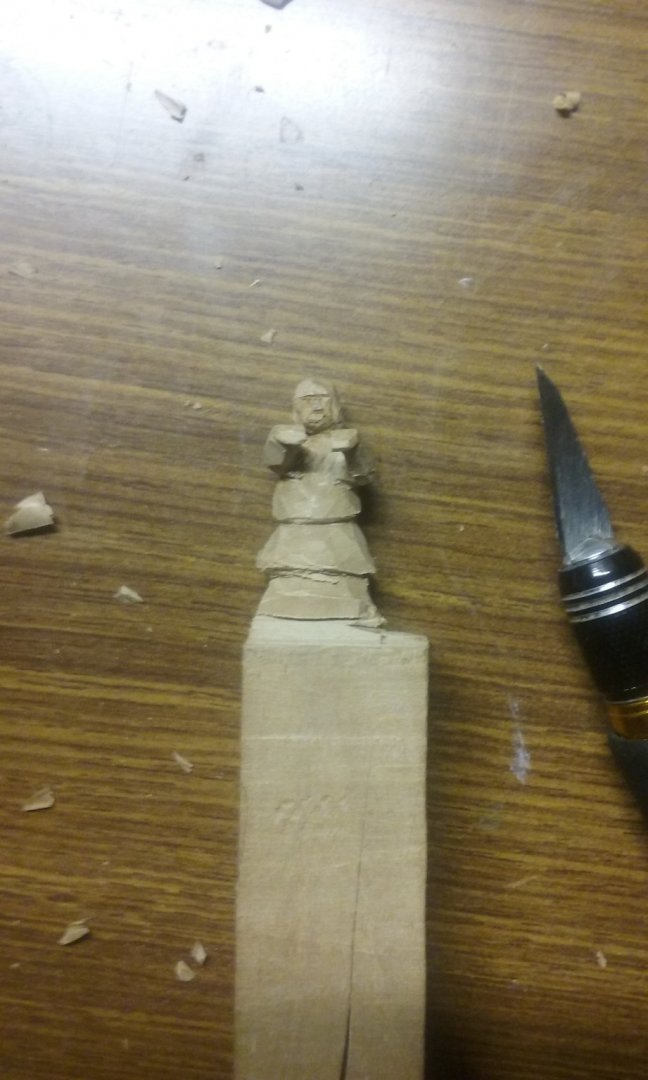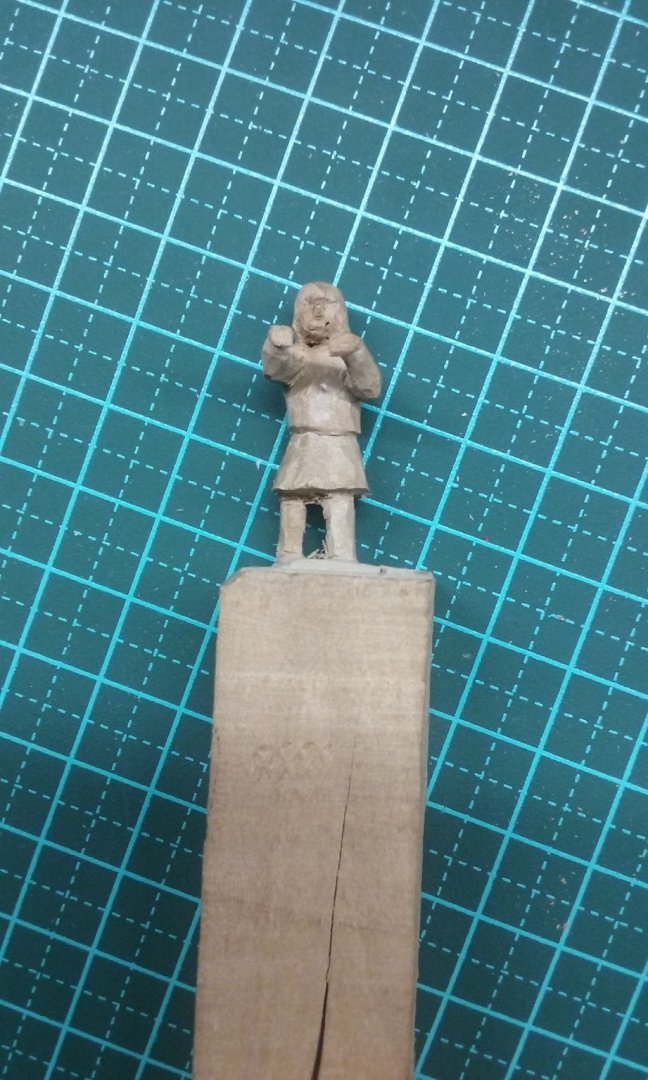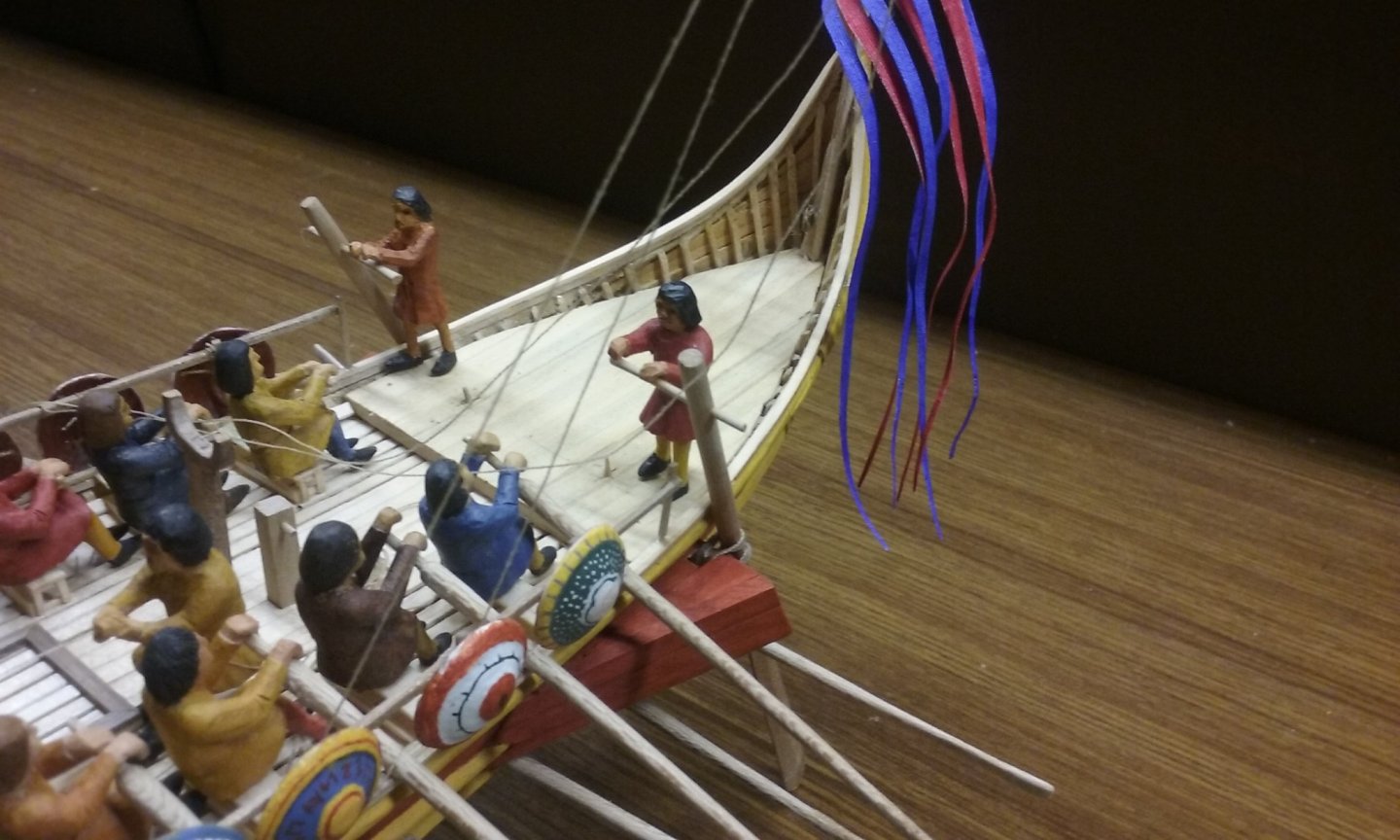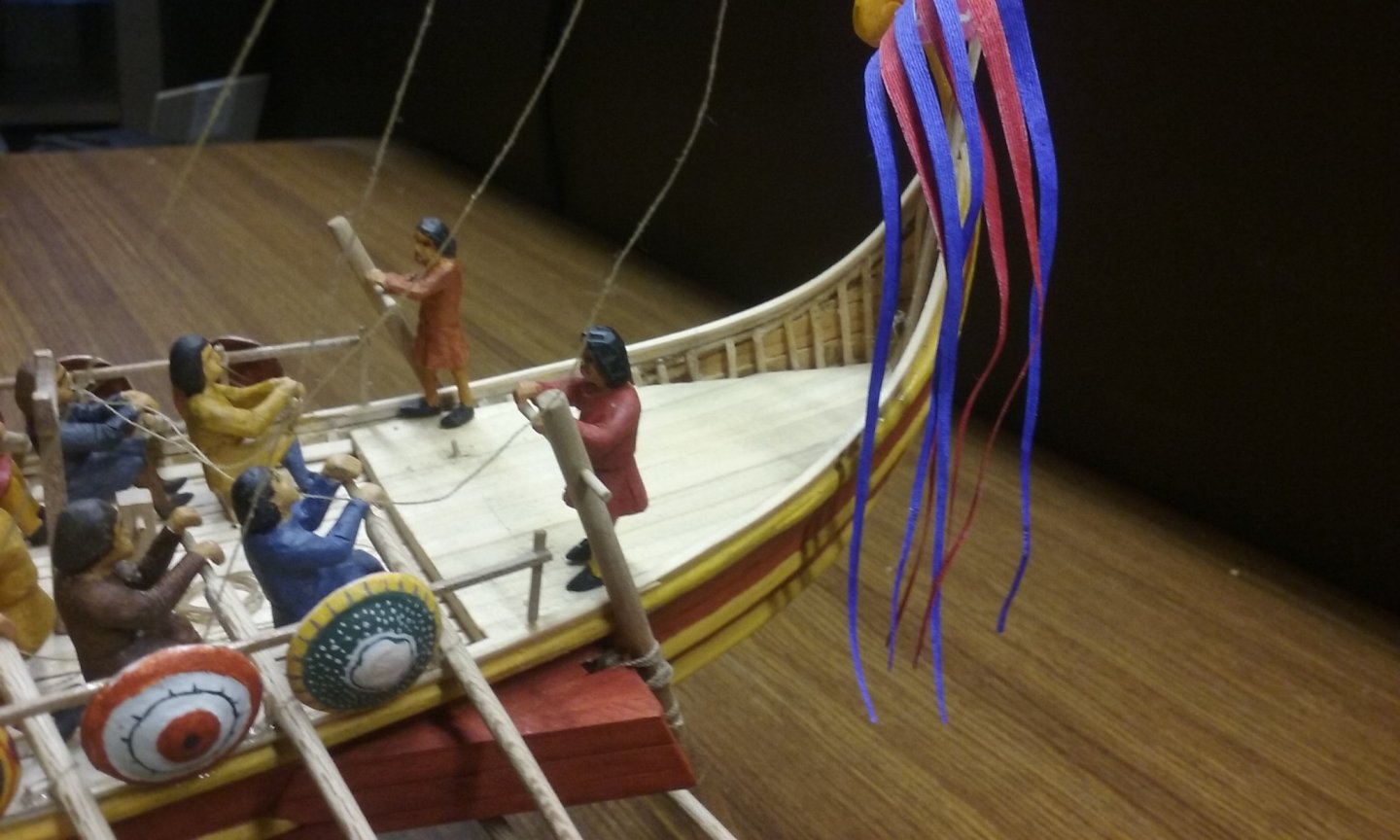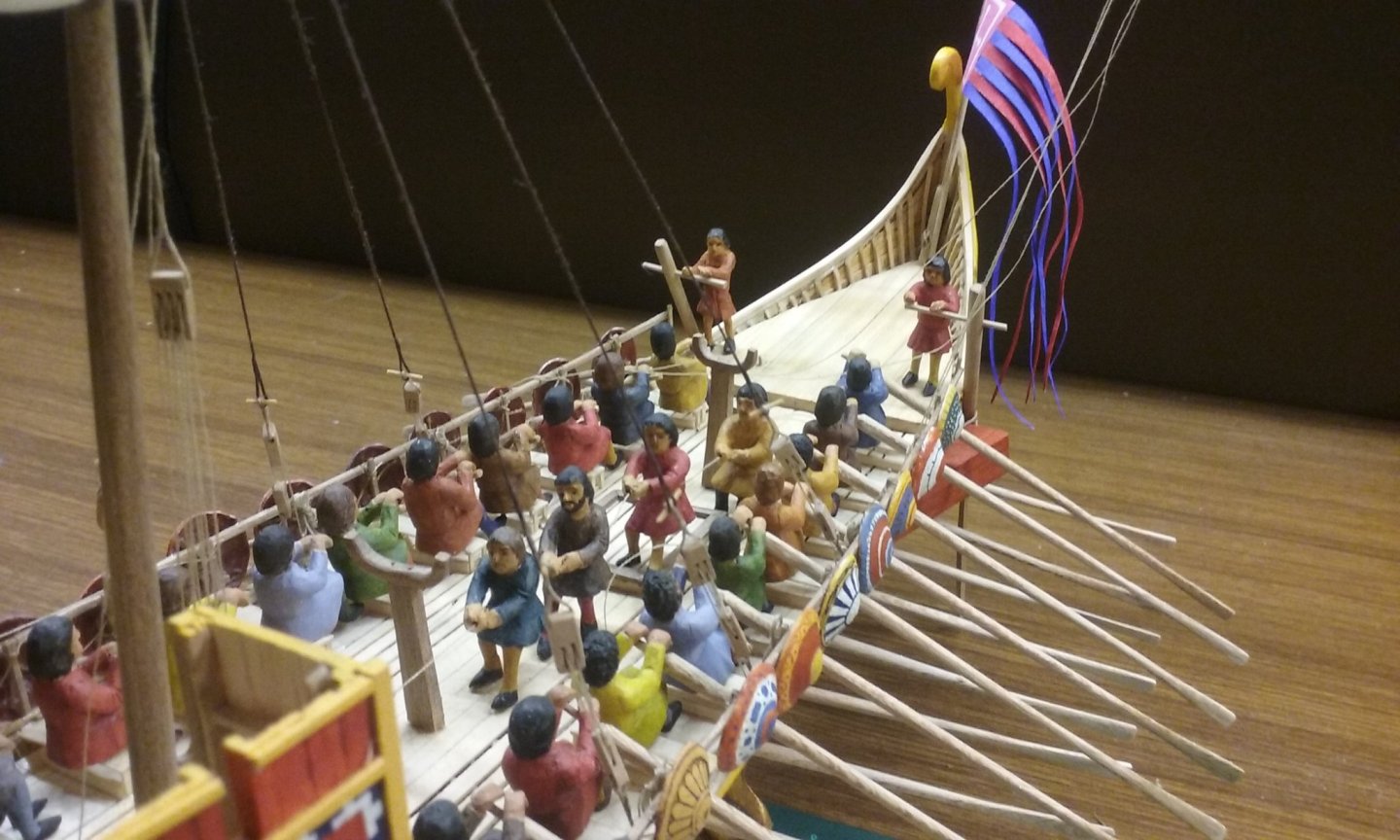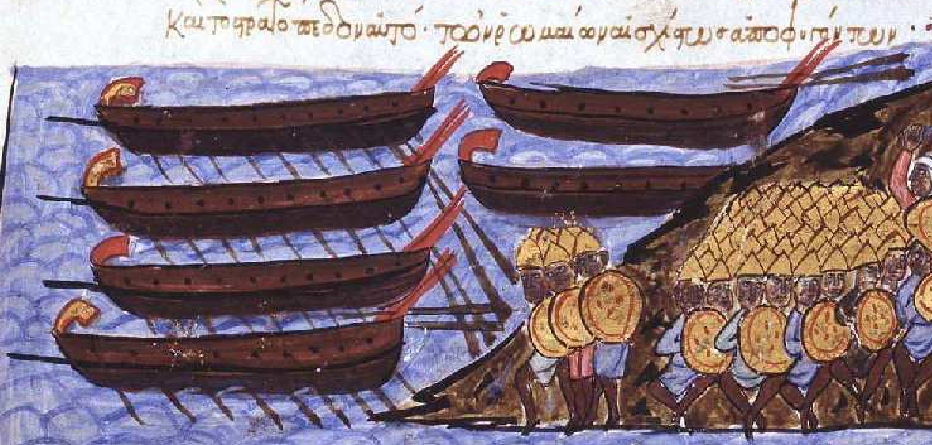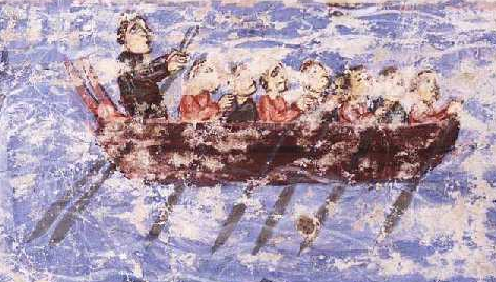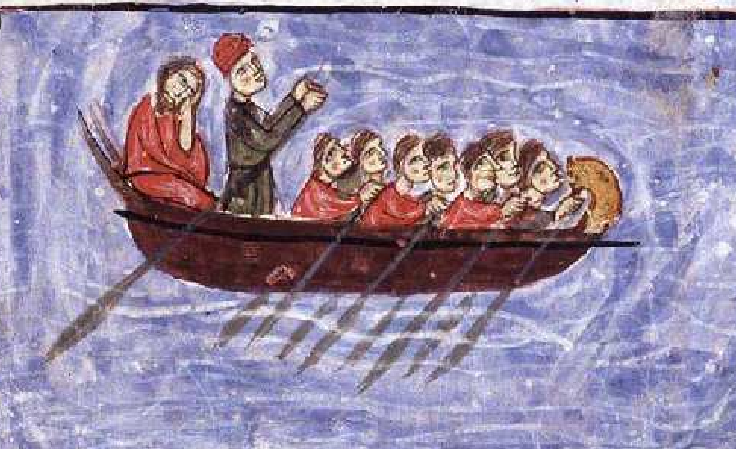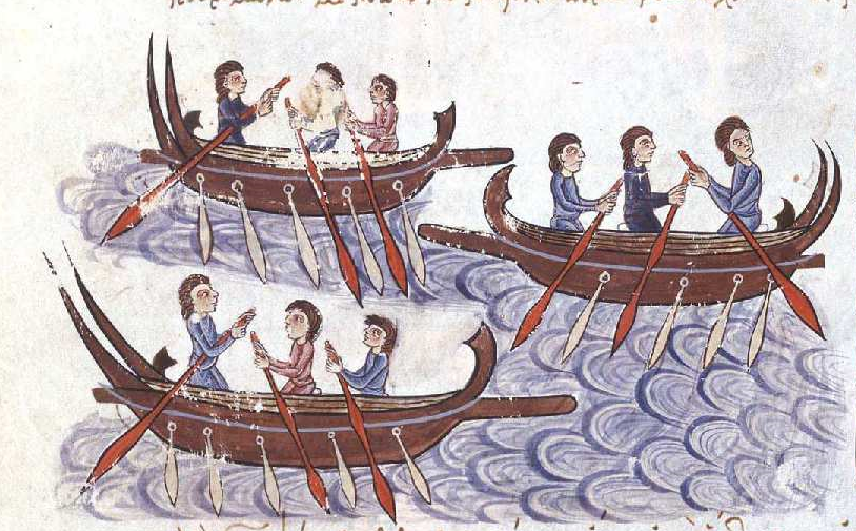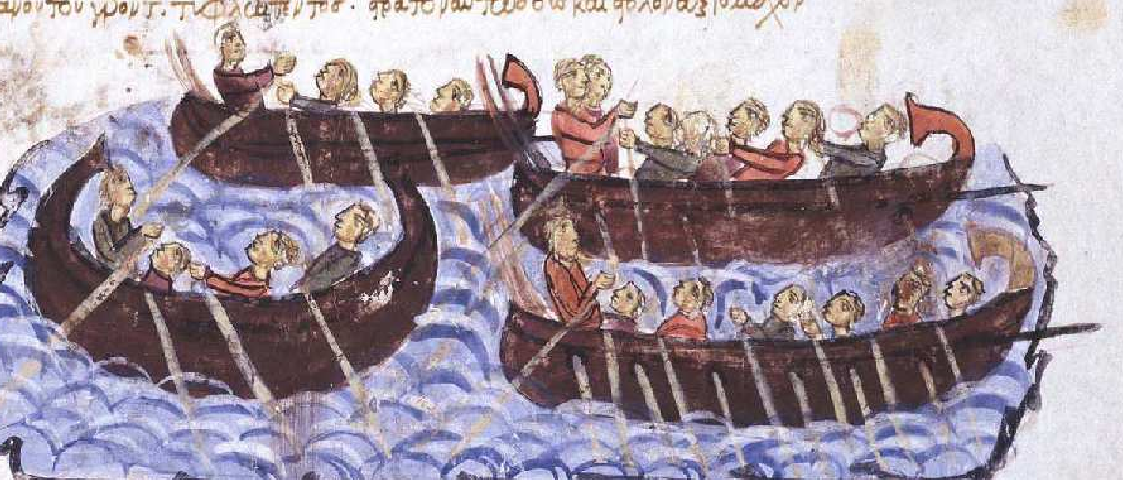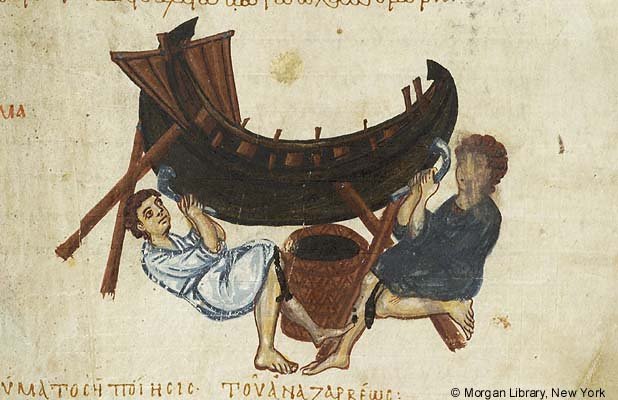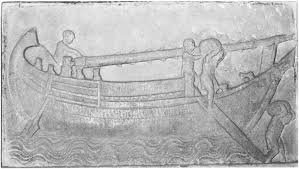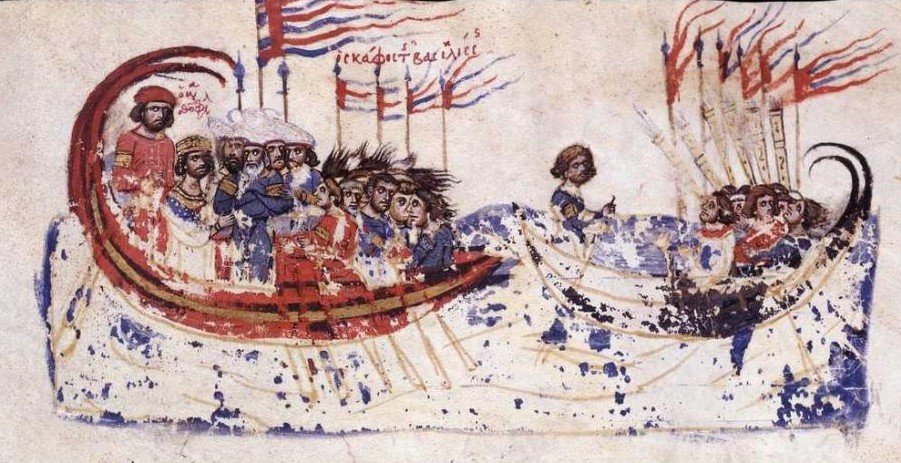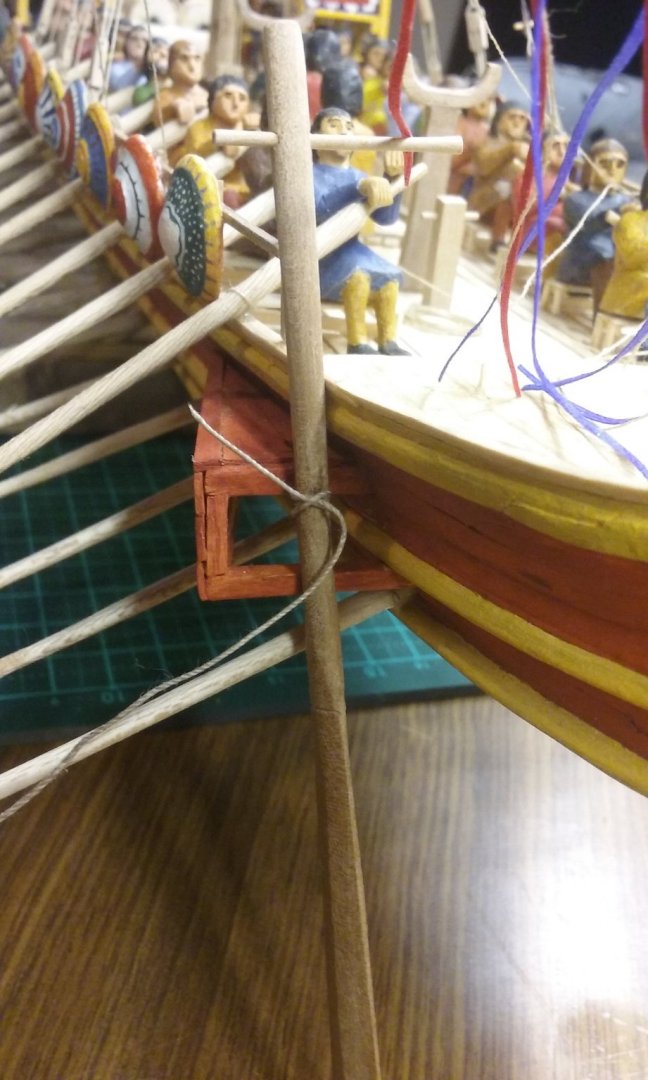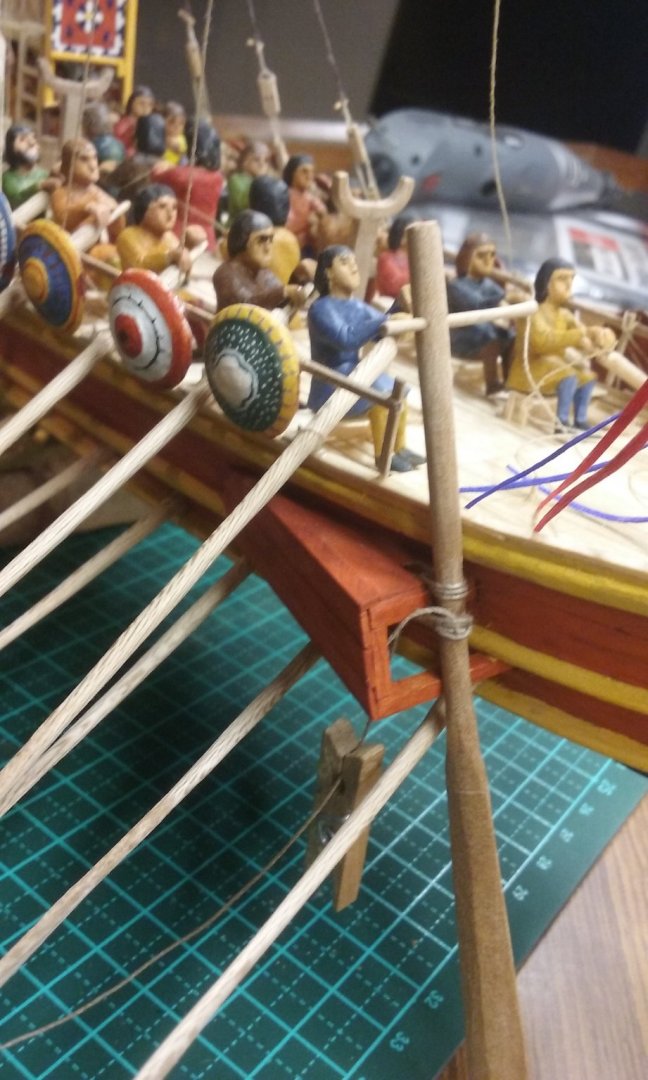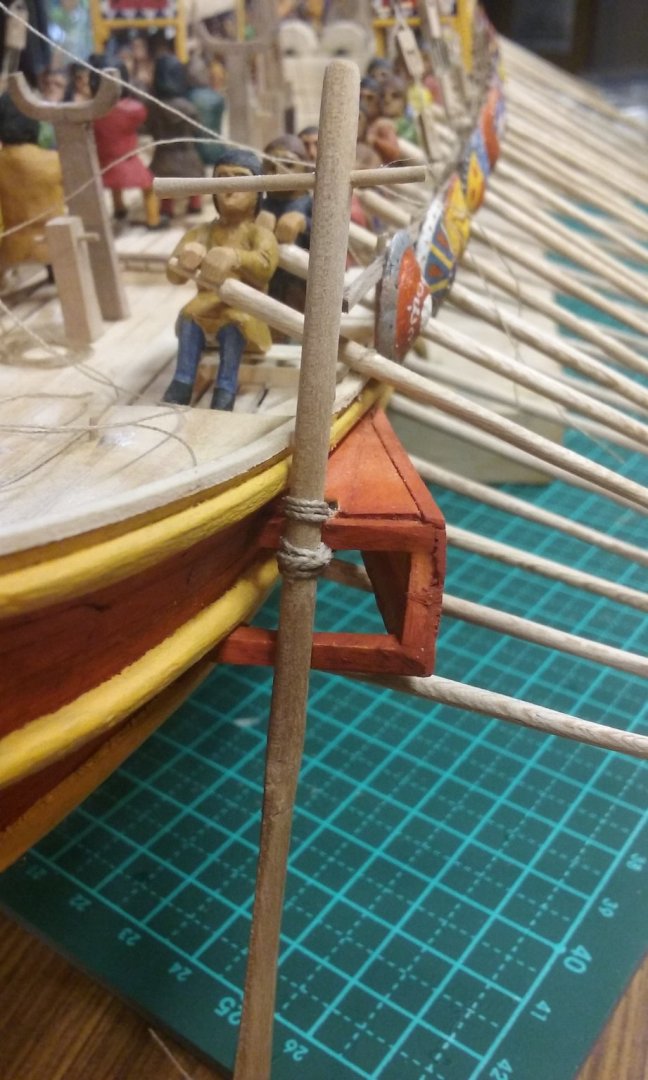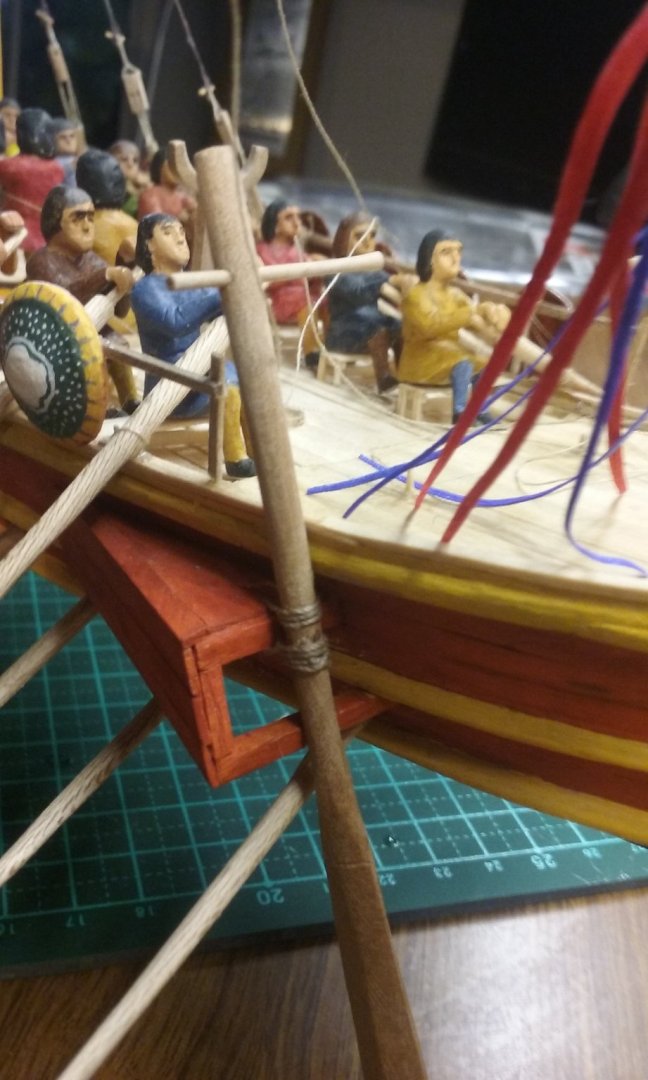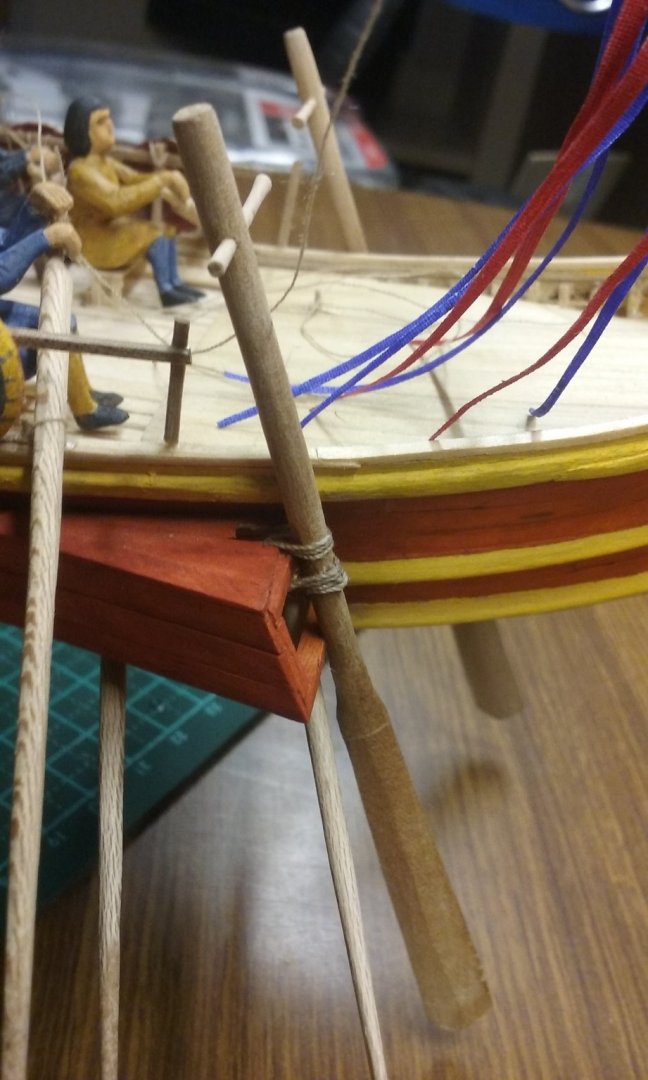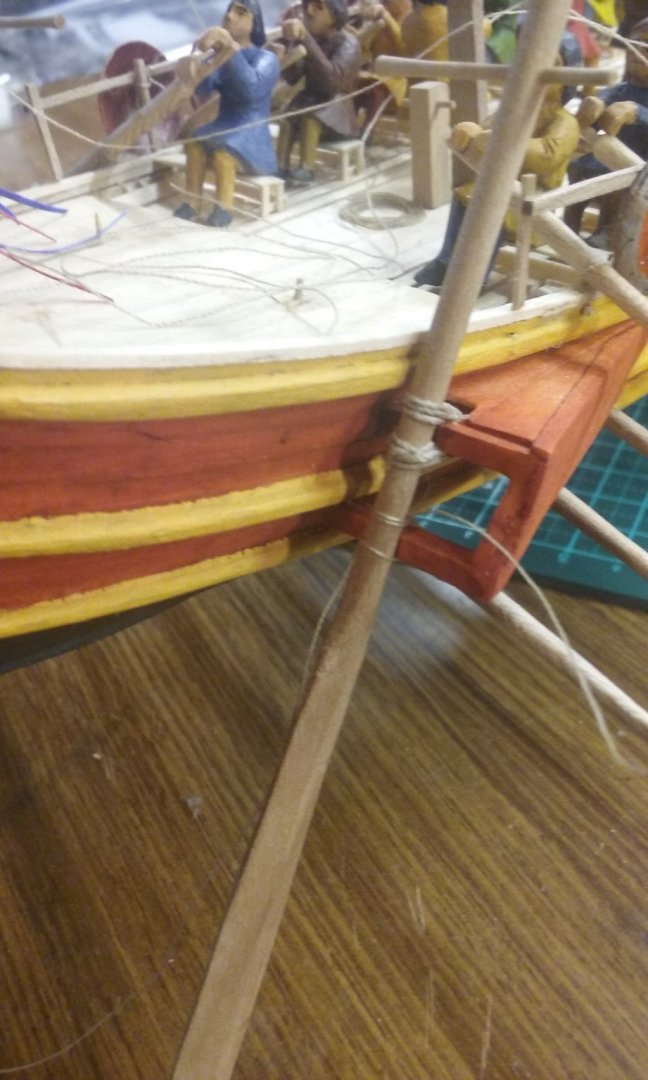-
Posts
7,982 -
Joined
-
Last visited
Content Type
Profiles
Forums
Gallery
Events
Everything posted by Louie da fly
-
That'd be great, Phil. Have you decided on a kit to start with? With your experience you ought to do well. When you begin, make sure you start a build log. Check out these instructions, and note that the build log section is divided up by periods, starting with "up to and Including 1500 AD" and going forward from there. So figure out which period is right for you and put your log there. Where in Perth do you live? I grew up in Attadale but haven't lived in WA for yonks. Say hello to the Swan River for me, will you?
-
I've carved the second steersman and finished the hands on the first one, and put both steersmen in place.
-

New to modeling where to post a kit build for advice?
Louie da fly replied to bosco72's topic in New member Introductions
There's a completed Airfix Golden Hind build log which might be of use to you . . . And if you put "Golden Hind" in the search bar (top right of the page) you'll find other builds - some non-Airfix kits, and at least one scratch build - they could be helpful in sorting out details. As you probably know, nobody knows what the ship really looked like. All the kits and reconstructions are "best guess" based on the information available from the time. You might in particular like to look at Backer's scratch build - a lot of valuable research information in that one (as well as a brilliantly realised model). -
I found a couple of interesting illustrations from the Madrid Skylitzes. First, I need to let you know that this manuscript is a Byzantine history and was produced in Sicily in the second half of the 12th century under the rule of the Sicilo-Normans. A number of different artists from various traditions and cultures illustrated it, which accounts for the different artistic styles. Most of the ones below are probably by Western artists, but the ones I've based the dromon on (such as the one above with all the flags flying in the breeze) are in the Byzantine tradition, produced by Byzantine-trained artists. Two handed grip on rudder - folio 132 verso. folio 134 verso. This is the only illustration by this artist who is almost certainly West European. Probably single-handed. Folio 146 verso. Folio 168 verso. Western artist, whose renditions of ships are very simplistic. From folio 138 verso. Note the beached galleys with their steering oars swivelled up out of the water. This appears to be the only rendition of a ship in the manuscript that shows both steering oars, though it's pretty certain that double rudders were a standard feature. It is possible that in smaller vessels there was only one steersman who operated both rudders. Certainly when Tim Severin and his associates followed Jason's voyage from Thessaly to Colchis in what is now Southern Russia in the 1970, the steersman held one rudder in his right hand and the other in his left, and it worked well. Due to budget constraints their reconstruction of the Argo was smaller than Jason's 50-oared pentekontor. However, each rudder shaft broke twice on the voyage and had to be mended. So the forces involved are considerable, even on a twenty-oared vessel.
-
Thanks everybody for the likes and OC for the nice comment. Pat, as far as I can work out that's the fixing point for the steering oar against the hull. They came in various types (the TAMU paper goes into them in considerable detail). I chose the triangular ones you can see in my pictures above, but there were plenty of other types - "box", "socket" and even some where the steering oar actually goes through a hole in the hull..
-
Hi Mike, and welcome to MSW. Do you have a particular model in mind? If not, there's a good place to look here: Once you start making your model, make sure you start a build log of your own. A great way to get help, advice and encouragement. If it's a kit, the instructions are here: If you're building from scratch, this is the place to look: Note that the sections for both kit and scratch build logs are sub-divided into periods - the first one being "Up to and including 1500 AD", and moving up from there. So make sure your log goes in the right category so it can be found easily. Good luck with your build, and have fun with it!
-
In Oz until Covid hit every second Easter there was a gathering open to all Australian "pre-colonial" re-enactors, where everybody immerses themselves in the ambience (or ambulance as my family prefer to say) for four days - living under canvas, fighting, talking, having workshops, making music, cooking over a wood fire etc. I learnt how to make a fire with flint and steel, and it's quite rewarding making do - we know it's not really like living back in the day - thank heavens - but it's very enjoyable. Every other Easter, there has always been a "Dark Ages" gathering in a pine forest at Armidale in rural New South Wales - same sort of thing, but Dark Ages specific, That's where I met my lovely wife.
-

New to modeling where to post a kit build for advice?
Louie da fly replied to bosco72's topic in New member Introductions
Hi Bosco, The page on how to post a log is here: The reason for Old Collingwood's question is probably that the section on kit logs is divided into time periods - starting with "up to and including 1500 AD' and working up from there to present time. Choose the one that's appropriate to your own build. And welcome to MSW. I'd second OC's curiosity - what model are you building? -
The one in the blue, yes. It's a bit hard to see what the steersman in the red is doing. Maybe I should go through all the illustrations in the Skylitzes to see if there are any others showing anything worthwhile on this subject.
-
Oh, wow - they just keep on coming up! I'm familiar with this picture, but I never noticed the ιστοδόκη before.
-
Just discovered another rendition of an ιστοδόκη. Unfortunately I haven't been able to find a source for it (I got it off Pinterest), but I believe it to be Roman.
-
Ah! But he has an awning over his head (yet to be added) which will take care of the banner tails. But they certainly had those big banners - in fact I'm being a bit conservative, if anything . . . From the Synopsis Historian of Ioannes Skylitzes (commonly known as the Madrid Skylitzes Chronicle, after the library where it's held) And I've just realised I have another Byzantine pic of a steering oar with a tiller - check it out - it looks a lot like what I ended up making! Though it seems to me the steersman is holding it the wrong side of the rudder shaft. From the Sermons of Gregory of Nazianzus: Pantaleimon Cod. 6 f. 183r
-
Yeah, but 10 years? Something seriously wrong with his GPS. And of course it's not a good idea to annoy the sea-god.
-
Brian, you never know till you try. From my own experience the first attempt would probably be pretty dreadful, but you learn from the first one and apply those lessons to the next attempt, and it turns out quite a bit better. Just don't try doing the Academician's dragon head as your first project!
-
I love your storage box for the figures. Keeps them safe from harm. I keep mine in a clear plastic box but the principle's the same (and mine are quite a bit smaller). Here in Oz you could never get anything like those numbers for 17th century re-enactment - or any other period for that matter. I understand why they do it (to minimise the injuries to cuts and bruises), but it's always bugged me - in the real world those pikes would be held horizontally, not vertically. See this video of the Battle of Hastings re-enactment in 2006 - the spear work starts at 7.25.
-
He probably thinks it'll only take a week or so . . . Beautiful work, Christos. A model to be proud of.
-
For one horrible moment I thought you'd drilled up through the bottom of your longboat. Then sanity intervened - I realised it's just to give an idea how the mast will look (Be still, my beating heart!)
-
My God! He's actually doing it! All this time I'd thought (hoped) it was all a bad dream . . . Just joking, Dick. In fact this could be really interesting and instructive.
- 186 replies
-
- keelless
- reverse clinker
- (and 4 more)
-
And on to the lashings for the side rudders. The diagrams of lashings in the TAMU paper I mentioned on the previous page weren't much help, so I worked up something of my own. Remembering back to my days as a Sea Scout at the age of 14 I remembered a lashing we'd used. But first I had to re-teach myself how to do a clove hitch, something I hadn't tried for 57 years, and even back then I'm not sure I really mastered it. Took me two or three goes with the instructions in front of me, then maybe half a dozen tries without. And I think now I can do a clove hitch from here on in - something I think is going to be very useful in future models involving ratlines(!). The clove hitch starts the lashing: Then round and round: This is a sort of universal joint made from rope. It allows the rudder shaft to pivot left and right for steering under the influence of the tiller, just as in a stern rudder. And it can also swing upwards around the beam so the rudder lifts out of the water - either when only one rudder is in use, or to enable the dromon to be pulled up onto the beach stern-first. Then for the lower lashing - this one is made of lighter rope. According to the TAMU paper on the previous page of this log, if the rudder hits a submerged obstruction, instead of the rudder shaft being shattered the rope will break allowing the rudder to swing up out of the way. Before beaching the ship this lower lashing is untied. That's all for now . . .
-
Congratulations, Hellmuht! You've done a beautiful job of this model; a combination of thorough research, inspired guesswork when the information wasn't available, and superb craftsmanship.
- 158 replies
-
- byblos ship
- Egyptian
-
(and 1 more)
Tagged with:
-
Glad you liked them, Christos. Probably the best website for these is https://zaherkammoun.com/2017/01/06/des-mosaiques-de-sousse/
About us
Modelshipworld - Advancing Ship Modeling through Research
SSL Secured
Your security is important for us so this Website is SSL-Secured
NRG Mailing Address
Nautical Research Guild
237 South Lincoln Street
Westmont IL, 60559-1917
Model Ship World ® and the MSW logo are Registered Trademarks, and belong to the Nautical Research Guild (United States Patent and Trademark Office: No. 6,929,264 & No. 6,929,274, registered Dec. 20, 2022)
Helpful Links
About the NRG
If you enjoy building ship models that are historically accurate as well as beautiful, then The Nautical Research Guild (NRG) is just right for you.
The Guild is a non-profit educational organization whose mission is to “Advance Ship Modeling Through Research”. We provide support to our members in their efforts to raise the quality of their model ships.
The Nautical Research Guild has published our world-renowned quarterly magazine, The Nautical Research Journal, since 1955. The pages of the Journal are full of articles by accomplished ship modelers who show you how they create those exquisite details on their models, and by maritime historians who show you the correct details to build. The Journal is available in both print and digital editions. Go to the NRG web site (www.thenrg.org) to download a complimentary digital copy of the Journal. The NRG also publishes plan sets, books and compilations of back issues of the Journal and the former Ships in Scale and Model Ship Builder magazines.



